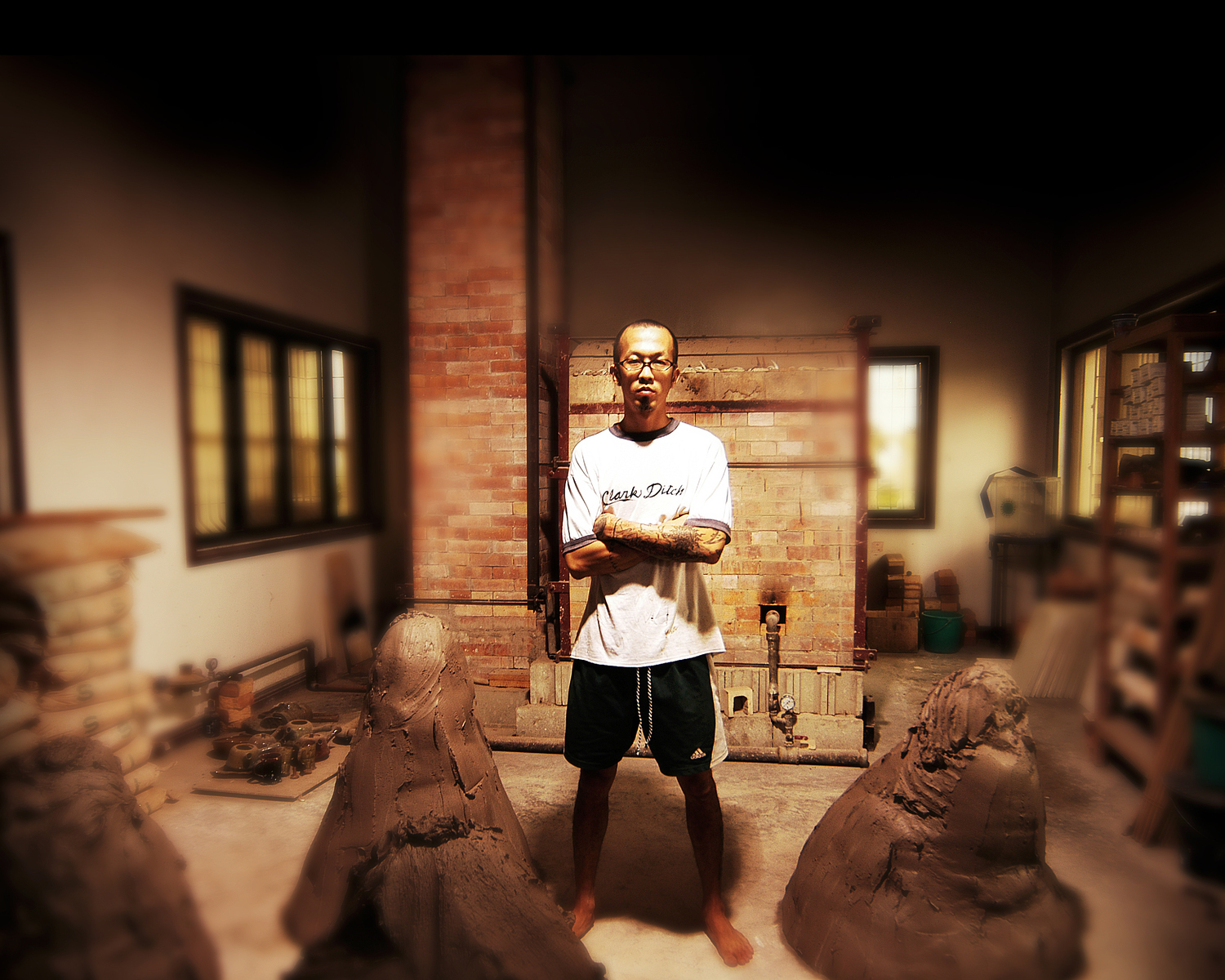Malaysia and Singapore
Many of the ceramic factories in these two areas were established by immigrant Chinese in the late nineteenth and early twentieth centuries. Factories in other parts of the region, such as the pottery industry at Singkawang in west Kalimantan in Indonesia, developed in this way also. The Taiping Rebellion (1848 - 65) left China in a disruptive state of social order. Refugees swarmed Guangdong and Fujian Provinces, causing an excessive drain on the resources. Beset with famine, disease and anarchy, large numbers of Chinese emigrated from the southern provinces. Thus, Southeast Asia benefited from the unfortunate events in China by the direct transfer of Chinese potting techniques.
Documented evidence about he everyday life of immigrant Chinese in Southeast Asia between the nineteenth and twentieth centuries is beginning to emerge, and it is evident that many factories started as small family operations set up to produce ceramics fro personal domestic needs. Accustomed to high-fired glazed vessels fro daily use, the Chinese must have found the utensils used in Southeast Asia, such as banana leaf plates and coconut shell cups, alien and unsuitable. Conversely, the colorful wares with their pristine glazes and painted motifs must have appealed to the local inhabitants of the regions, thus, and industry was born.
Unglazed pots for domestic use are made today in some rural parts of Malaysia but the knowledge and skill of potting is rapidly being lost. Daily utensils previously made of earthenware are today being replaced by metal replicas or by less expensive Chinese pottery. The ancient method of hand building is used and the potters are almost always women. Instead of a rotating wheel, the clay is shaped on a square wooden tray.
One remaining factory is in the village of Sayong in Perak. A training school has been set up to teach modern potting techniques, including the use of mechanized equipment. Some vessels are thrown on the wheel and others are molded. All the wares are fired in a modern gas kiln.
The main product is a black, unglazed water bottle in a double-gourd shape. The two sections are disproportionate in size and the neck has a bulge. The body is decorated with a band of vertical lines, deeply incised with a bamboo knife. A distinctive feature of these water bottles is a glossy, burnished surface, which is achieved by burying the pots in rice husks immediately after firing.

![140-1[1].jpg](https://images.squarespace-cdn.com/content/v1/532744c3e4b051c9f1ed3284/1395888113786-8L5SDZBG5LGXOGVJ1OCS/140-1%5B1%5D.jpg)
![196408518_f81e53b75e_m[1].jpg](https://images.squarespace-cdn.com/content/v1/532744c3e4b051c9f1ed3284/1395888118111-LG27Q2YPSY41EZ3Z4TFT/196408518_f81e53b75e_m%5B1%5D.jpg)
![196411547_32be40093b_m[1].jpg](https://images.squarespace-cdn.com/content/v1/532744c3e4b051c9f1ed3284/1395888120272-NYDQMRTLMRFLZ40PW96V/196411547_32be40093b_m%5B1%5D.jpg)
![312545065_ddbe2aad98_m[1].jpg](https://images.squarespace-cdn.com/content/v1/532744c3e4b051c9f1ed3284/1395888123289-Z2YXIM58TI0Q675BNHW4/312545065_ddbe2aad98_m%5B1%5D.jpg)
![312545279_75fe9c96d7_m[1].jpg](https://images.squarespace-cdn.com/content/v1/532744c3e4b051c9f1ed3284/1395888126937-KWZARD5AV5J8H8J07D7M/312545279_75fe9c96d7_m%5B1%5D.jpg)
![388856774_6730db6ac2_m[1].jpg](https://images.squarespace-cdn.com/content/v1/532744c3e4b051c9f1ed3284/1395888130404-H3WL6QVDW2PRFDIPOYNS/388856774_6730db6ac2_m%5B1%5D.jpg)